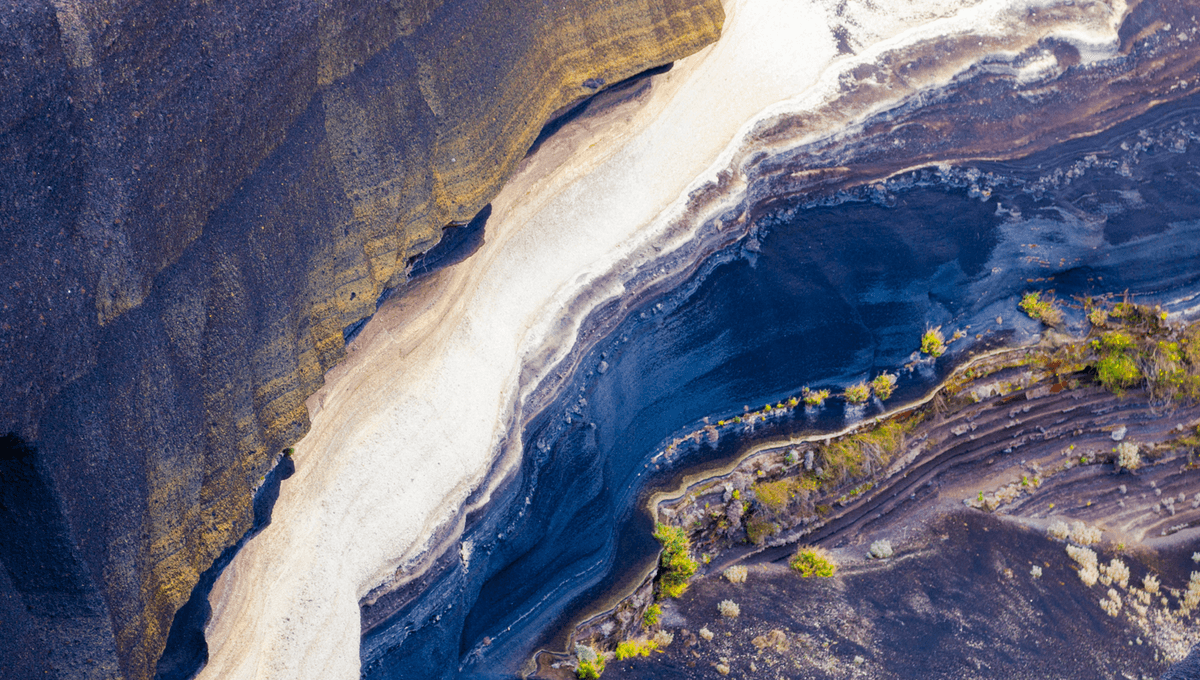
Earth’s rocky crust can sometimes seem like a drab, dull, and lifeless place (sorry, geologists, we know it’s more interesting than that… sometimes). However, with a drill, a microscope, and a bit of luck you’ll see that beneath the surface lies a hidden world of history and life.
The term “endolith” – deriving from the Greek words for “inside rock” – describes the broad variety of organisms that colonize the interior of rocks, including bacteria, viruses, fungi, lichen, algae, or amoeba. They can inhabit the tiny pores between mineral grains, leaving behind a distinctive coloration that indicates their presence, or they can also coat the hidden pockets and crevices within giant geological formations.
Endoliths inhabit a diverse range of rocks across the world (and within). The easiest place to see them is in rocks above ground. For example, scientists have documented colonies of microbes living inside ancient limestone Maya monuments in Mexico.
They are also associated with environments that few other lifeforms dare to dwell in. For instance, there are endolithic blue-green algae living under the surface of rocks in the dry valleys of southern Victoria Land in Antarctica, as well as similar algae organisms living in limestone found in the baking hot deserts of Israel and California.
It’s not that they necessarily prefer these extreme environments, but rather that they are able to thrive here because they face little or no competition from other life forms.
Life also thrives at a much deeper and more unlikely level. As per a landmark 2018 study by the Deep Carbon Observatory, a wealth of microbes – namely bacteria and archaea, but also some multicellular eukaryotes – live deep within Earth’s crust at depths between 2.5 and 5 kilometers (1.55 to 3.1 miles) below the ground, both beneath the seafloor and under the inland continents.
In fact, their research estimated that approximately 70 percent of the total number of microbes on the planet live underground.
It’s unclear how the organisms spread through the subsurface since it’s formed largely of densely packed sediment and rock. They might migrate downwards and laterally through cracks in the rocks or, alternatively, it’s possible they actually originated deeper in Earth within the crust near features like hydrothermal vents.
The microbes can be incredibly diverse, although it’s notable that some clear similarities can be found between subsurface communities on different sides of the planet. Once again, it’s uncertain how this might happen.
Subjected to intense heat, crushing pressures, no light, and scarcely any nutrients, the microbes found by the Deep Carbon Observatory were said to have “life cycles on near-geologic timescale.”
“Exploring the deep subsurface is akin to exploring the Amazon rainforest. There is life everywhere, and everywhere there’s an awe-inspiring abundance of unexpected and unusual organisms,” Mitch Sogin, a scientist at the Marine Biological Laboratory Woods Hole and co-chair of Deep Carbon Observatory’s Deep Life community, said in a statement.
Speaking of ancient life, scientists once recovered prehistoric microbes that were locked in a layer of 101.5-million-year-old marine sediment, unearthed from deep below the seafloor. Remarkably, they took them back to the lab, incubated them, and they started to multiply. The researchers were cautious not to put a precise age on the organisms, but it’s safe to assume they are unbelievably old.
“We believe the community has remained there for 100 million years, with an unknown number of generations. Since the calculated energy flux for subseafloor sedimentary microbes is barely sufficient for molecular repair, the number of generations could be inconceivably low,” Steven D’Hondt, study author and Professor of Oceanography at the University of Rhode Island, told IFLScience in 2020.
Source Link: Strange Lifeforms Dwell In Earth's Crust And Some May Live For Millions Of Years